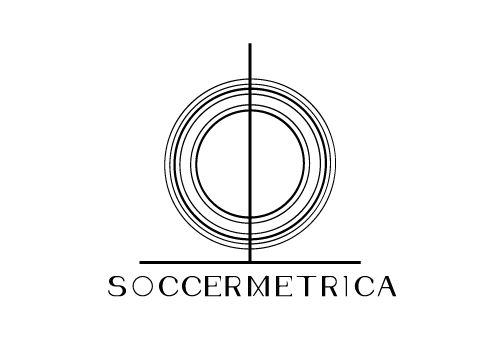Barcelona were rewarded for a dominant first half display with a Luis Suarez double that gave the Catalan side a commanding position in the tie before Sergio Aguero pegged one back for Manchester City in the 69th. City then went down to 10 men after two yellow cards in 15 minutes saw Gael Clichy sent off. Barcelona had an opportunity to kill off the tie after Pablo Zabaleta brought down Lionel Messi in the box but the Barca #10 had his effort saved by Joe Hart then headed the rebound wide.
Manuel Pellegrini and his side may take some joy from an improved second half and the knowledge that it could have ended far worse following the sending off but the truth is that this is a disastrous result- beating Barca by two goals at the Nou Camp would rank among the Champions League's biggest shocks.
Pellegrini should shoulder a large part of the blame. He opted for a 4-4-2 against Barcelona's 4-3-3 which meant the visiting side had a 3 v. 2 advantage in the middle of midfield. Barcelona were able to use that extra midfielder to dominate possession. Losing the possession battle and having that numerical disadvantage in itself isn't necessarily a problem. Atletico Madrid play 4-4-2 and have enjoyed a great deal of success the last two seasons against Barcelona and Real Madrid, sides that nearly always play with three central midfielders. They do this by dropping off into two incredibly compact banks of four and pressing the opposition relentlessly when they cross midfield (as opposed to pressing high up the pitch). When they win possession back they break forward immediately at pace.
Unlike Atletico Madrid, Manchester City are not a side whose 4-4-2 system is based around compact pressing and countering. City play a much more open style and prefer to boss possession. They lead the Premier League in average possession with 60% per game. However, it's one thing to dominate possession using a 4-4-2 against opposition in England, where City generally enjoy a talent gap over their opposition and the game's rapid speed means less emphasis is placed on controlled buildup, but another thing to do so against Barcelona, a club whose footballing identity is built around keeping the ball.
Pellegrini stated before the game his side would be more attacking than they'd been in the knockout stages against Barca last season and sticking with his favored 4-4-2 suggested he meant it. But with Rakitic, Busquets and Iniesta up against Milner and Fernando in the midfield zone City simply couldn't get a foothold on the game as Barca's spare man meant they nearly always had a passing option that allowed them to keep the ball. Whether it was because Barcelona were enjoying possession or by Pellegrini's design, City's midfield bank of four dropped well into their own half. That's a strategy that's worked well against Barca in the past- allowing them to play the ball in midfield and get their attack minded fullbacks into advanced positions opens space behind those same fullbacks to quickly counter into when possession is won back. However, to employ that system you need midfielders that work incredibly hard defensively and are capable of winning tackles and that also have the pace and athleticism to quickly transition in behind the opposition fullbacks. . For Atletico those players are Arda Turan and Koke, players that average 2.0 and 2.6 tackles per game respectively but just 41.9 and 51.6 passes per game. City's wide players this evening were Samir Nasri and David Silva, players that average just 1.1 and 1.2 tackles respectively but 59.5 and 65.4 passes. In other words, Silva and Nasri are much more suited to games where City control the possession and spend less time defending.
The rather long-winded point is that it's difficult to understand exactly what Pellegrini was trying to do. If his plan was to defend slightly deeper and play on the break, surely Nasri should have been replaced by Jesus Navas or James Milner (with Fernandinho coming into midfield alongside Fernando), players more suited to playing on the break. If instead it was to try to have plenty of possession it's strange to think he'd be optimistic enough to believe he could do that playing with one less midfielder than a side that averages 70% possession in their domestic league. Dropping Dzeko and bringing Nasri inside to a #10 role would have made more sense.
Another key element of the fact City were outnumbered in midfield is that it allowed space down the channels for the Barcelona fullbacks to push into. Milner and Fernando were 2 v. 3 against the Barcelons midfield and with Messi freqeuntly tucking into very narrow positions from the left this often became 2 v. 4. As a result, Nasri and Silva tucked in to very narrow defensive positions to even the numbers in that zone. The screen shot below was taken in the 30th minute and shows just how narrow City's defensive shape was. Conceding the channels is a strategy sides often have to take against Barcelona to not get overrun in the middle but Luis Enrique's side exploited the space well. Forty or so seconds after this photo Jordi Alba got around the outside of Silva and Zabaleta and cut back for Suarez to score what was ultimately the game winner.
After a disappointing La Liga defeat at the weekend and growing suggestions of discord between Messi and Luis Enrique, this was a big win for Barcelona. As a closer follower of English football than La Liga I tend to write these posts from the prospective of what the English team did right or wrong but it was a treat to watch Barca tonight. I thought Rakitic and Pique were were particularly excellent. If anything the result doesn't reflect just how dominant the Catalan side were and they'll be disappointed they don't have a bigger cushion heading into the second leg.


